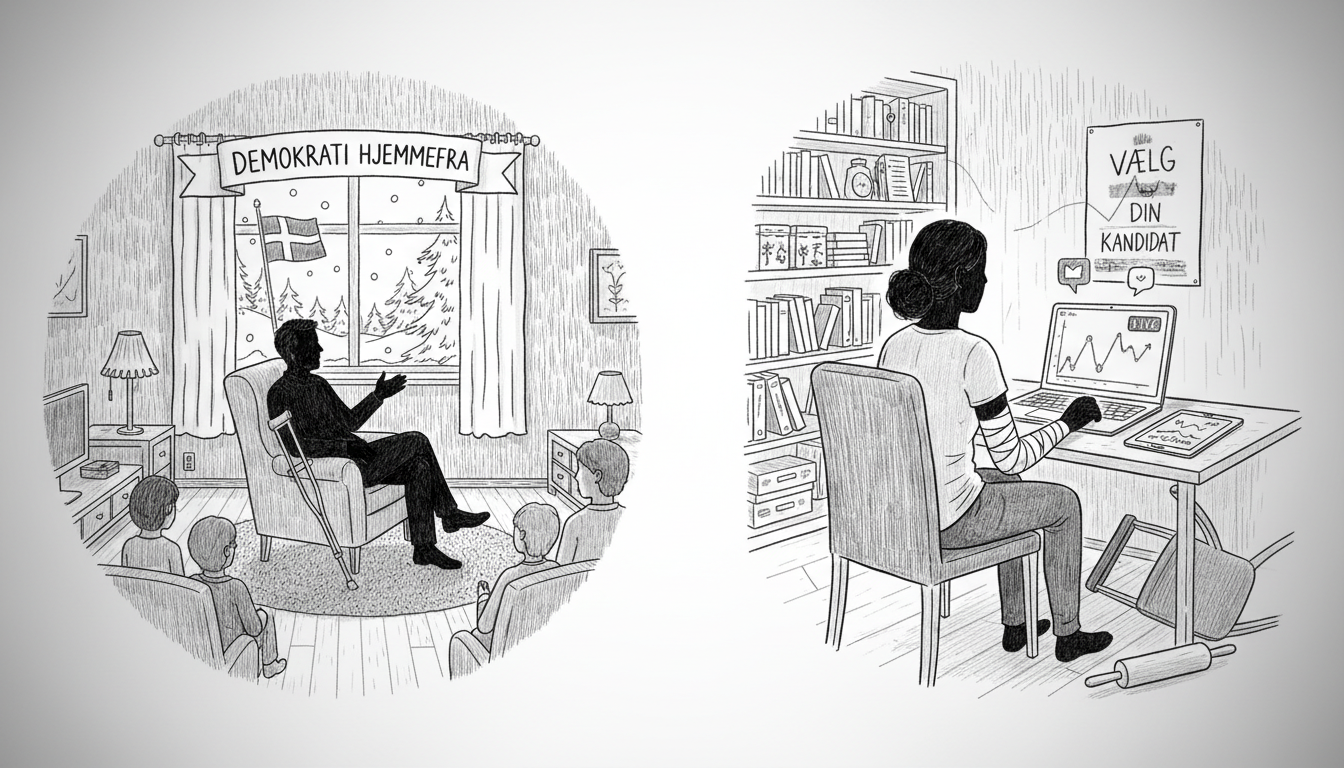Two Danish local election candidates have transformed their living rooms and sickbeds into campaign headquarters after unexpected injuries derailed their traditional campaigning plans. While other politicians climb lampposts to hang posters and walk city streets distributing flyers, these determined candidates found creative ways to connect with voters from their homes.
In Esbjerg Municipality, local council member Tina Skov Larsen faces an unusual campaign challenge. A kitchen accident involving a dropped knife resulted in severe foot injuries requiring emergency surgery. Instead of attending public events and meeting voters in person, she now conducts her campaign primarily through social media platforms.
"I'm really tired of this situation," she explained. "I want to be out there visible during the campaign, so it's frustrating to be stuck sitting in a chair." The injury occurred while she was preparing her daughter's birthday cake, when a large kitchen knife fell and cut through tendons and blood vessels in her foot.
Despite her physical limitations, Larsen discovered unexpected community support. She received 20-30 offers of assistance through Facebook from people willing to distribute campaign materials on her behalf. "I struggle with asking for help, so I'm very grateful and touched by all the people who made themselves available," she noted.
Further north in Jutland, Social Democratic candidate Michael Lundsted Nielsen faces similar constraints while campaigning for Skive's municipal council. A necessary hip operation during the campaign period confined him mostly to his living room bed, but he refused to let this stop his political outreach.
"If I can't go out to voter meetings, then I have to move the voter meetings home to myself," Nielsen stated. "This is the best way I can have conversations with voters." His approach has already brought ten voters to his living room for discussions, with more visits scheduled for the coming week.
Both candidates demonstrate how modern campaigning increasingly blends digital and personal approaches. Their situations highlight both the physical demands of traditional political campaigning and the growing importance of social media in Danish local elections. While unable to participate in standard campaign activities, they maintain active voter engagement through alternative methods.
Local elections in Denmark typically involve intense personal contact between candidates and constituents. The traditional model includes door-to-door canvassing, public debates, and street-level interactions. These candidates' adaptations show how technology can bridge physical limitations while raising questions about accessibility in political participation.
Nielsen emphasized that his home meetings focus on understanding voters' perspectives rather than administrative casework. "I try to make politics human, and I'm focused on meeting people, understanding their situation, and helping them," he explained. "This isn't about case processing - it's about gaining insight into their world to translate that understanding into policies that can help citizens."
The candidates' experiences reflect broader trends in political campaigning where digital platforms complement traditional methods. Their determination to continue campaigning despite physical setbacks underscores the competitive nature of Danish local politics and candidates' commitment to voter engagement.
Danish political analysts note that such personalized approaches, while born of necessity, can sometimes create stronger voter connections than standard campaign methods. The intimate setting of home meetings and direct social media communication may foster deeper understanding between candidates and constituents.
Both candidates plan to continue their adapted campaign strategies until election day, proving that physical presence isn't the only way to make political impact in Denmark's municipal elections.
